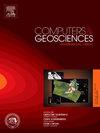基于特征解缠的时空深度网络推进地震监测
IF 4.4
2区 地球科学
Q1 COMPUTER SCIENCE, INTERDISCIPLINARY APPLICATIONS
引用次数: 0
摘要
地震监测是评估地震灾害的关键,它涉及相位选择和位置估计等相互关联的任务。现有的单参数估计方法存在任务相互依赖导致的误差累积,并且通常依赖于经验值。多参数估计方法往往依赖于来自多个站点的数据,这给建模和揭示站间关系带来了挑战。为了应对这些挑战,本研究提出了一种新的神经网络——正弦正弦神经网络,旨在同时估计地震监测中的关键参数,包括p相到达时间、位置和震级。SINE开发了一个多任务框架,该框架结合了图神经网络(gnn)和双向长短期记忆网络(BI-LSTM)来提取时空特征,有效地减少了任务间的错误积累。与之前基于gnn的模型不同,SINE采用了特征解纠缠结构,可以自动识别地震台站之间的多个潜在关系。此外,采用基于cnn的解析单元对多个地震参数同时进行回归。对南加州和意大利数据集的评估表明,SINE优于现有的DL模型和传统的地震学方法。此外,正弦函数有效地降低了任务间依赖性,增强了地震监测的鲁棒性。本文章由计算机程序翻译,如有差异,请以英文原文为准。
Spatio-temporal deep networks with feature disentangling for advancing earthquake monitoring
Earthquake monitoring is essential for assessing seismic hazards and involves interconnected tasks such as phase picking and location estimation. Existing single-parameter estimation methods suffer from error accumulation caused by task interdependencies and typically rely on empirical values. Multi-parameter estimation methods often depend on data from multiple stations, posing challenges in modeling and revealing the inter-station relationships. To address these challenges, this study proposes a novel neural network, SINE, designed to simultaneously estimate key parameters in earthquake monitoring, including P-phase arrival time, location, and magnitude. SINE develops a multi-task framework that incorporates Graph Neural Networks (GNNs) and Bidirectional Long Short-Term Memory networks (BI-LSTM) to extract spatio-temporal features, effectively mitigating error accumulation across the tasks. Unlike previous GNN-based models, SINE incorporates a feature disentanglement structure to automatically identify multiple potential relationships between seismic stations. Additionally, the CNN-based parsing unit is employed to regress multiple seismic parameters simultaneously. Evaluation on datasets from Southern California and Italy shows that SINE outperforms existing DL models and traditional seismological methods. Furthermore, SINE effectively reduces inter-task dependencies, enhancing robustness in earthquake monitoring.
求助全文
通过发布文献求助,成功后即可免费获取论文全文。
去求助
来源期刊

Computers & Geosciences
地学-地球科学综合
CiteScore
9.30
自引率
6.80%
发文量
164
审稿时长
3.4 months
期刊介绍:
Computers & Geosciences publishes high impact, original research at the interface between Computer Sciences and Geosciences. Publications should apply modern computer science paradigms, whether computational or informatics-based, to address problems in the geosciences.
 求助内容:
求助内容: 应助结果提醒方式:
应助结果提醒方式:


